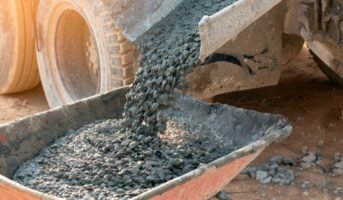Wall putty design at home helps your paintwork shine, makes it sturdy and saves you money at the same time. So, before you begin, it is vital to understand what wall putty is all about.
What is wall putty design at home?
Minerals and high-quality polymer make wall putty, which is white cement. In addition to rendered walls and precast walls, wall putty can be applied on lightweight blocks, concrete, etc. Use it on walls that have been damaged or have tiny holes in them. The wall putty provides a flawless finish. When it comes to painting, it’s done before the last coat of primer has dried.

Source: Pinterest
Types of wall putty design for home
There are two varieties of wall putty: acrylic wall putty and cement-based wall putty. Acrylic wall putty is the more common form. Acrylic wall putty is available in the form of a paste, and it can be applied directly to the wall surface. These are mainly intended for usage on interior walls. Cement-based putty, on the other hand, is offered in powder form, which must be combined with water before being applied. Presently, cement-based putty is the most extensively used kind of putty.
Acrylic Putty
It is a water-based acrylic putty specifically designed for use on interior walls. Compared to POP, this form of putty has a smooth texture and long-lasting qualities that make it a suitable choice. Acrylic putty is distinguished by its high quality, which results in a smooth and stunning finish on the walls. It also aids in the sealing of cracks and other irregularities in the wall.
White Cement Putty
It is a polymer-based putty that is one of the most widely used varieties of wall putty in residential construction today. The putty is made up of polymers, white cement, and minerals, making it suitable for use on both interior and exterior walls. Known for delivering an excellent finish to the walls, this putty is known for its shiny and smooth appearance. White cement wall putty has a high bonding strength and is easy to apply.
How should wall putty be applied?
- Before you commence, get hands-on wall putty and acrylic wall putty to create an even and smooth surface before painting the wall.
- Before applying putty, put on gloves and a face mask for your protection.
- You should first apply a primer to the wall before applying wall putty. Allow it to air dry for a few hours.
- It’s advisable to use two coats of wall putty. Before applying the second coat, allow it to cure for four hours. For best results, wait a few hours before applying the third layer.
- After the wall putty has been effectively coated, apply sandpaper to smooth off the surface.
- Dust and filth must be removed from the surface. If necessary, effectively remove limescale from the walls using sandpaper or a paint scraper.
Also read about roof sheet trends
Advantages of using wall putty
- A cost-effective method of reducing the use of paint on walls is to use wall putty; you will need far less paint to complete the task.
- Because wall putty has high water resistance, it helps to keep moisture from accumulating on walls.
- Because it forms a strong connection with the paint, wall putty helps to make it more robust and long-lasting.
- Because it provides a shiny, flawless, and attractive finish to the walls, it draws the actual colour of the paint to the fore.
- Wall putty contributes to the improvement of the tensile properties of the walls.
- Wall putty does not get ruined and eliminates the flaking of costly paint coats that would otherwise occur.
Disadvantages of using wall putty
- Because the putty dries quickly, it should only be applied to the walls by an inexperienced painter.
- After the putty has been applied, it is tough to scoop it off the surface.
- You will not be able to tweak or replace the wall putty after it has hardened.
- Preparing the putty with a mechanical stirrer is essential since it dries fast. Your hands and other tools will not be able to complete the task.
- Wall putty includes potentially toxic substances like formaldehyde, which may cause skin rashes in sensitive individuals.
- You may find it challenging to avoid cracks when applying wall putty to a broad surface area.
| Got any questions or point of view on our article? We would love to hear from you. Write to our Editor-in-Chief Jhumur Ghosh at [email protected] |
Priya Banerjee, a writer with a keen eye on the property market, she deciphers the ever-changing trends in residential real estate. Priya excels at simplifying complex real estate terms, making them easy for everyone to understand. Her well-researched advice helps buyers and investors understand complex topics.











